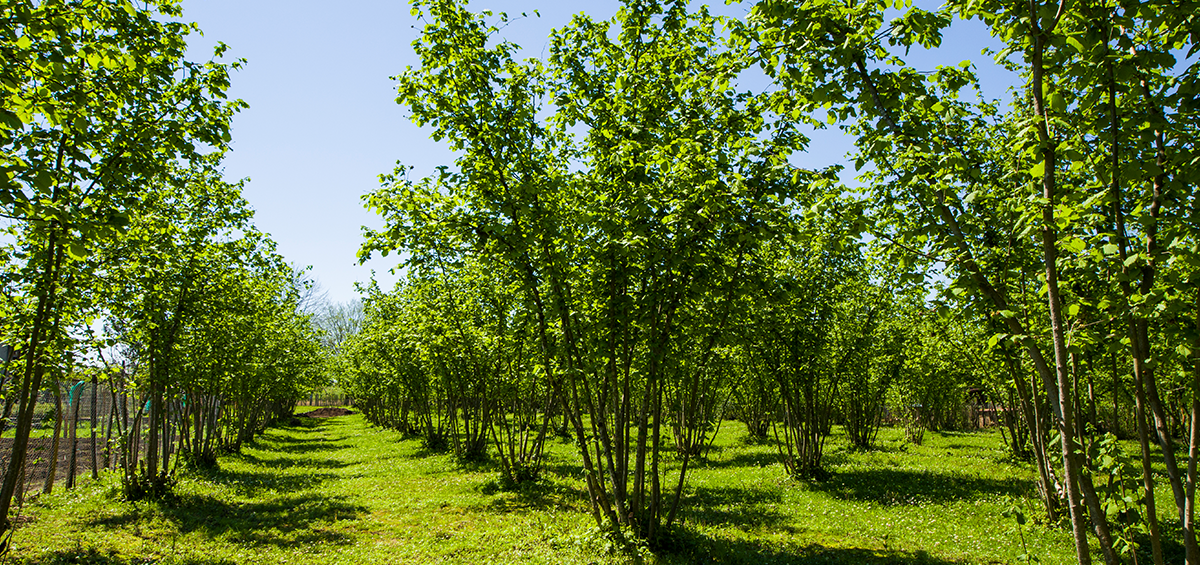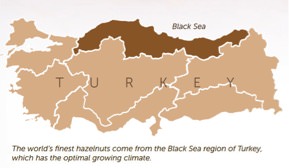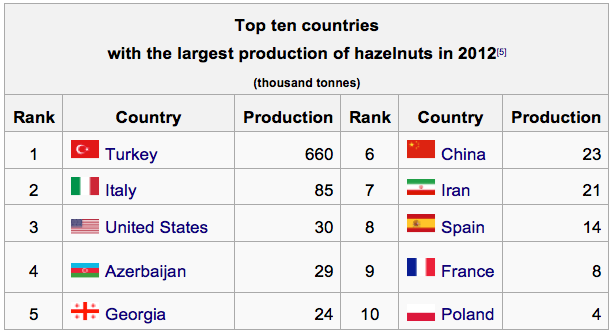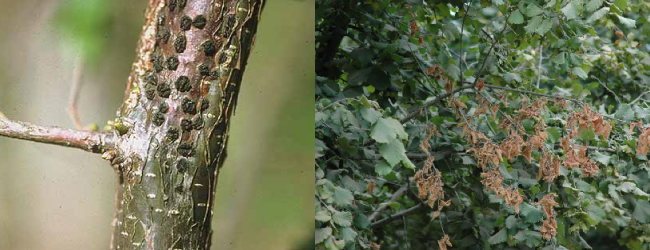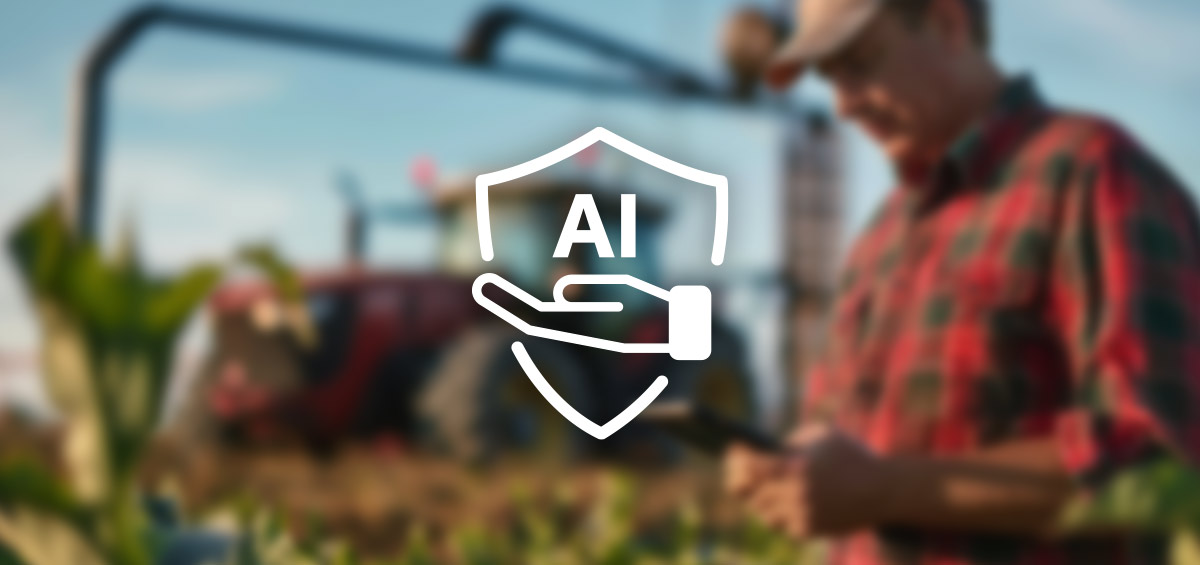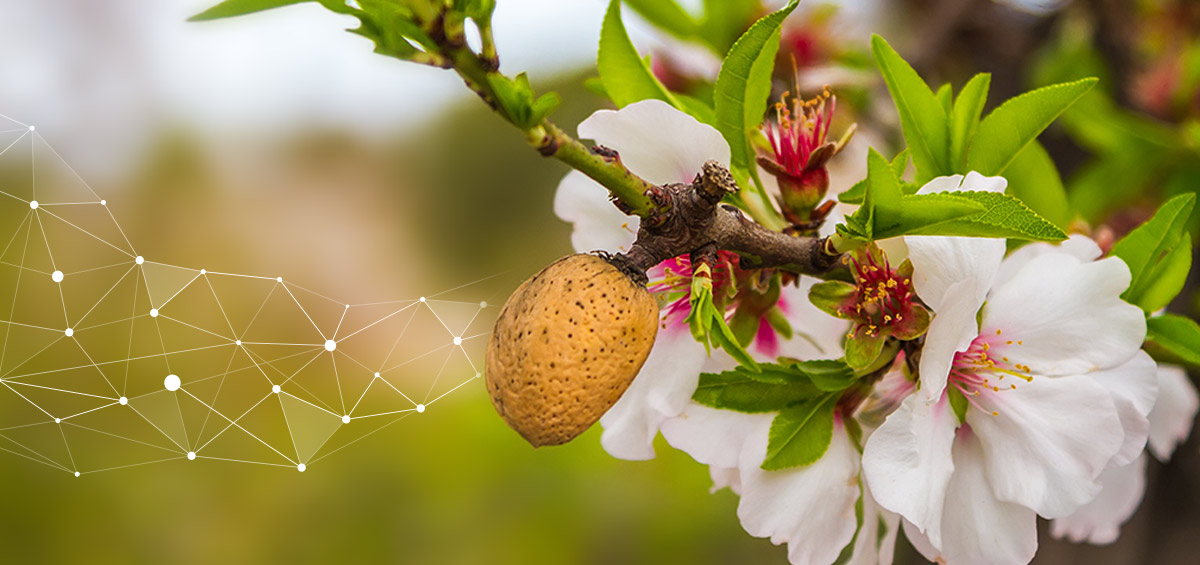Today, 80% of the world’s hazelnuts are produced in Turkey and the Turkish family farmers producing hazelnuts are extremely proud of the hazelnut crop, as it has been part of their family histories for centuries. Turkish hazelnut production of 625,000 tones.
Other major producers of hazelnuts are Azerbaijan, Italy, Greece, Cyprus, Georgia, in the south of the Spanish region of Catalonia, in the UK and Oregon.
Hazelnuts are used in confectionery to make praline, and also used in combination with chocolate for chocolate truffles and products such as Nutella and Frangelico liqueur. Nutella consumes 25% of global supply. Hazelnut oil is strongly flavored and used as a cooking oil. They are rich in protein, monounsaturated fat, vitamin E, manganese and numerous other essential nutrients.
Hazel is a traditional material used for making wattle, withy fencing, baskets, and the frames of coracle boats. The tree can be coppiced, and regenerating shoots allow for harvests every few years.
The production of hazelnut depends on a number of factors such as: species, age of the tree at the time of plantation, environmental conditions, site characteristics, damage caused by animals, height of the hazelnut trees, etc. However, the most important factor are pests- insects and diseases, especially Eastern filbert blight disease, which significantly reduces hazelnut production. The disease is caused by fungus Anisogramma anomala, whose spores are spread by the wind. Infection occurs in wet weather during spring, from bud break to shoot elongation.
Newly infected trees do not show any symptoms for 12-15 months and then infected branches may die suddenly. Dead leaves may stay on the branch. On infected twigs and branches are formed elongated, raised bumps, which are below the bark chocolate-brown. Each year cancers enlarge along the branch of susceptible trees. Branches die back when expanding cankers girdle branches and limbs.
Most of the canopy of susceptible trees is usually dead within 7 to 15 years after the first infection (if diseased limbs are not removed). Although orchards decline in vigor and health, they may continue to be productive. Tree productivity declines slowly at first but then sharply after 3 to 10 years depending on the cultivar. At some point the orchard becomes economically unproductive as the more susceptible pollinizers or main cultivars die out, resulting in poor nut set. The disease can be prevented by following cultural, biological and chemical measures;
Cultural control
- scouting for cankers twice a year
- planting resistant cultivars
- remove infected branches 1 to 3 feet below cankered area, burn, bury or chip before bud break in spring
- remove severely infected trees, start sucker control early in the season
- replace susceptible pollinizers with highly resistant ones
Biological control
- Bacillus subtilis strain QST 713, plus an adjuvant
Chemical control
- few fungicide applications are recommended to adequately protect trees, starting at bud swell to bud break
- use fungicides from different groups with different modes of action; copper products, propioconalzole, tebuconazole based fungicides
Find out more about destroying disease and how to protect your hazelnut farm, using AGRIVI farm management system. There you’ll find all hazel tree pests – insect pests and diseases, with list of active substances to treat them with. Protect your farm properly, use AGRIVI system.
